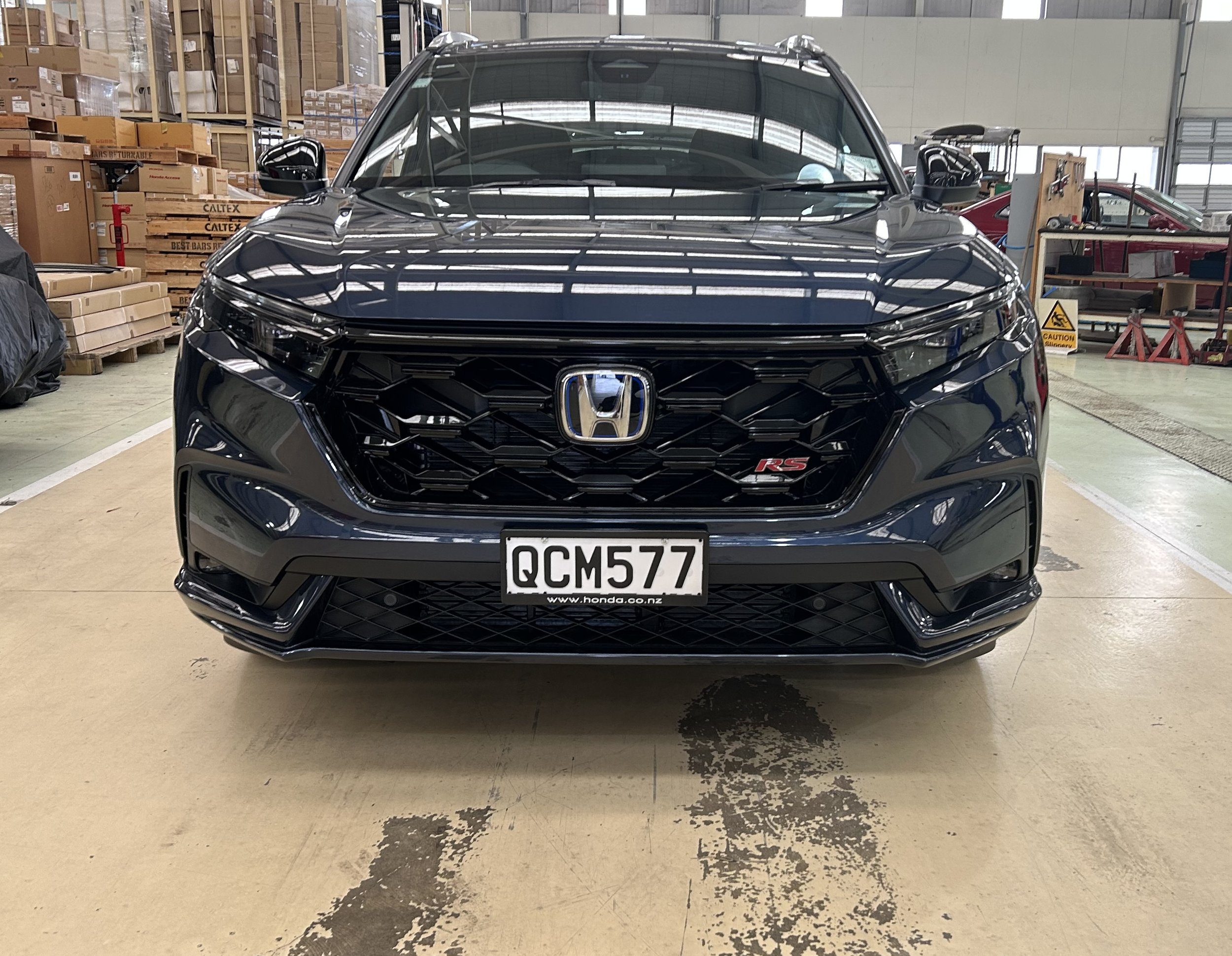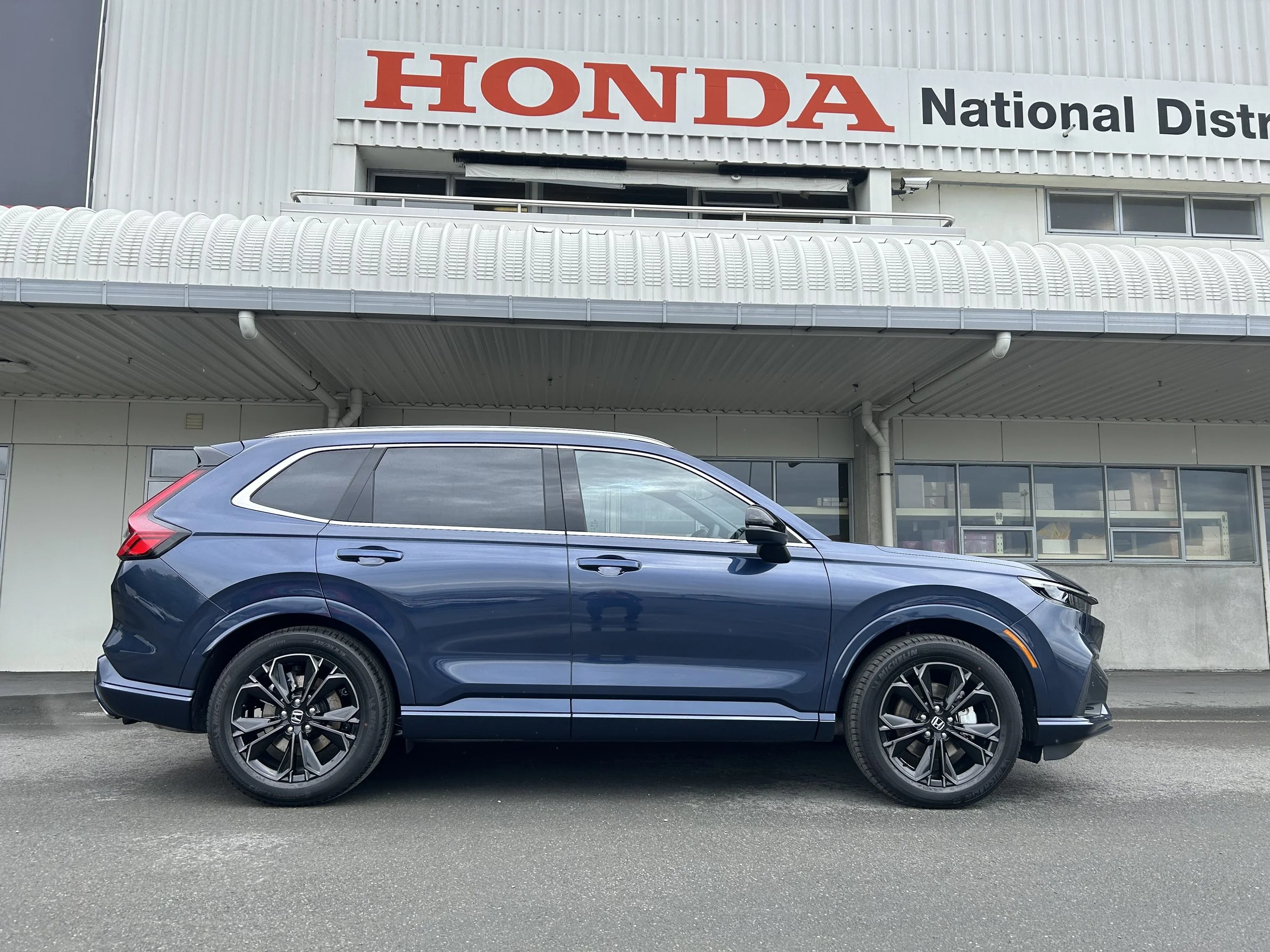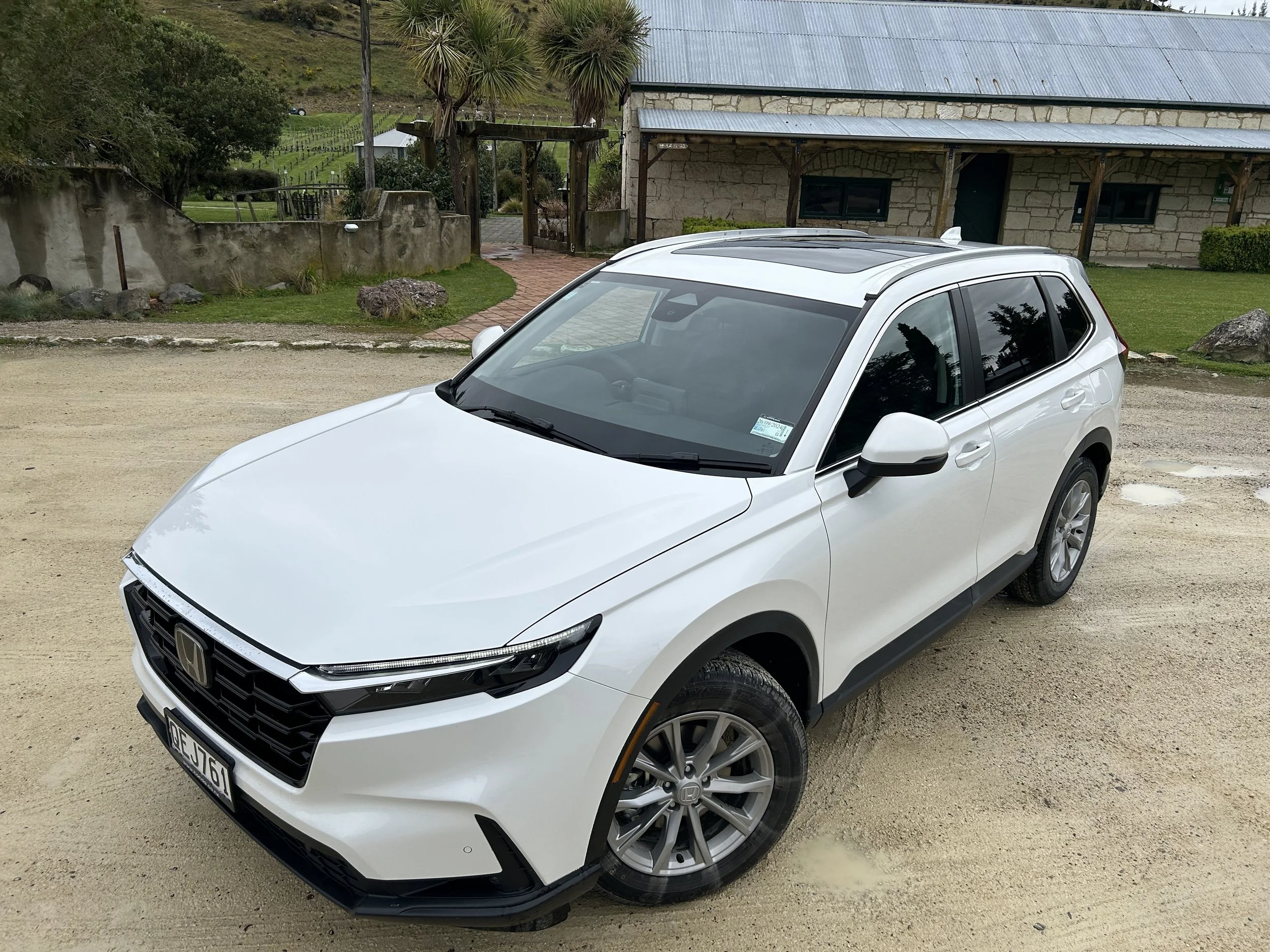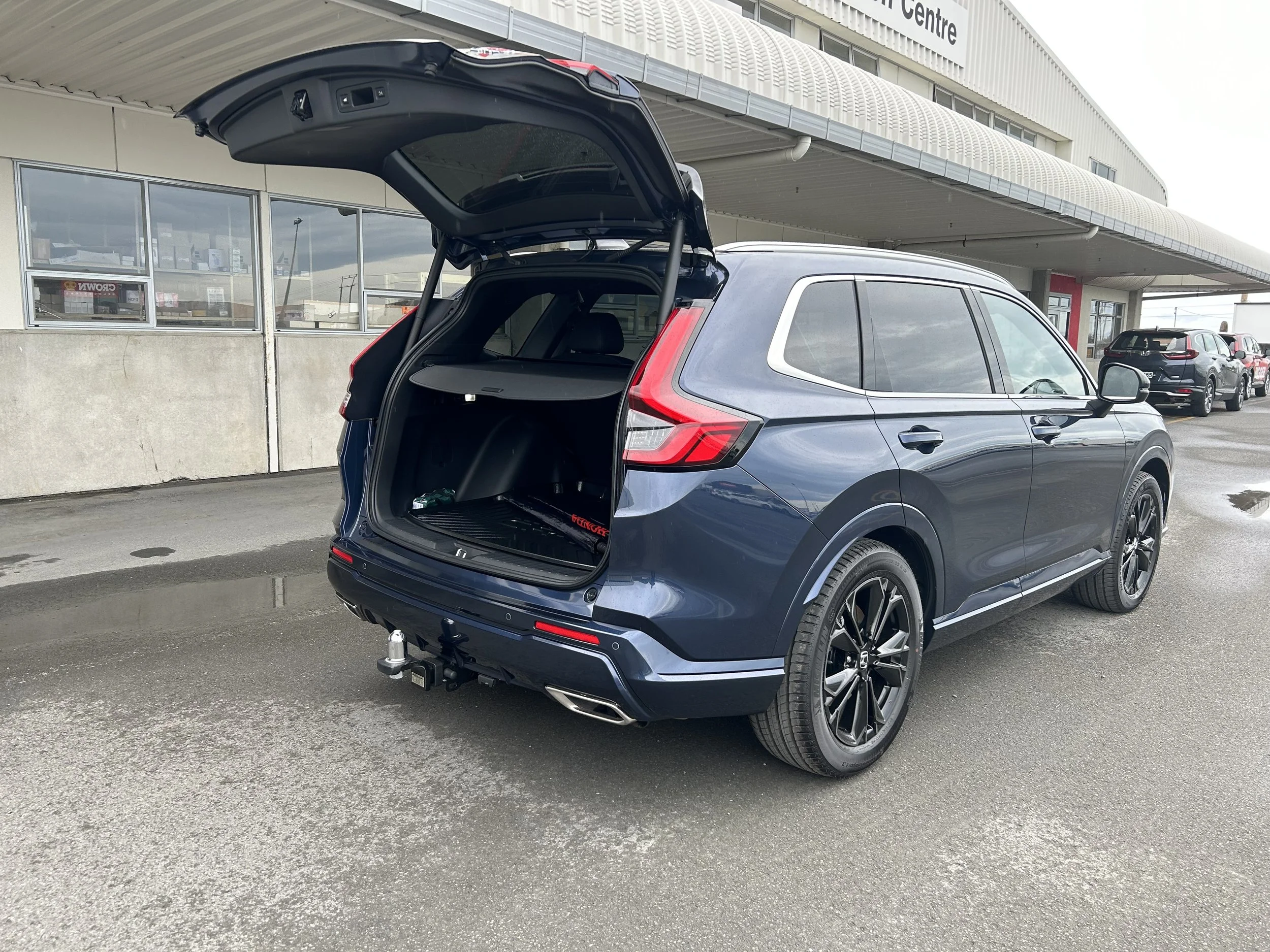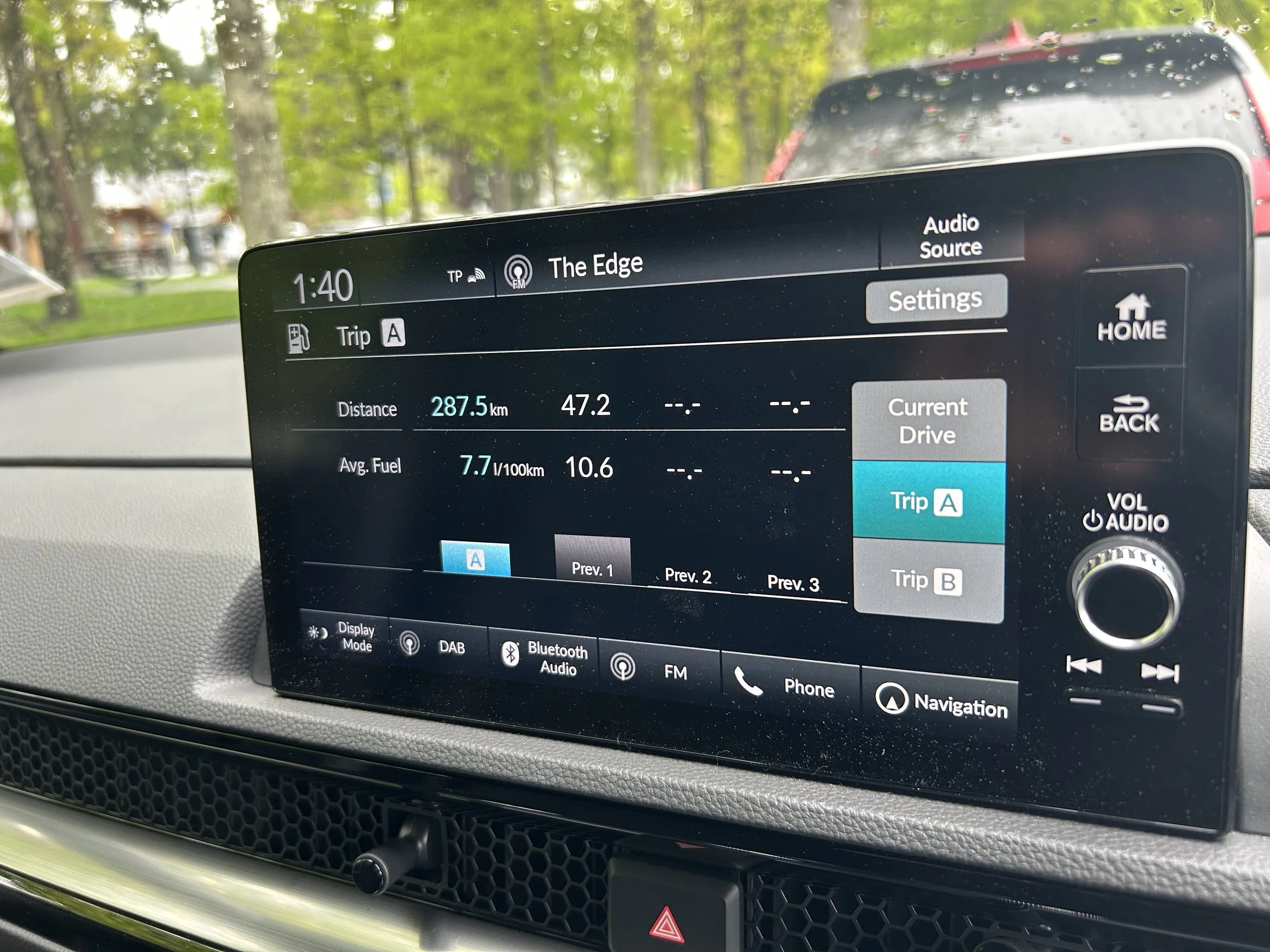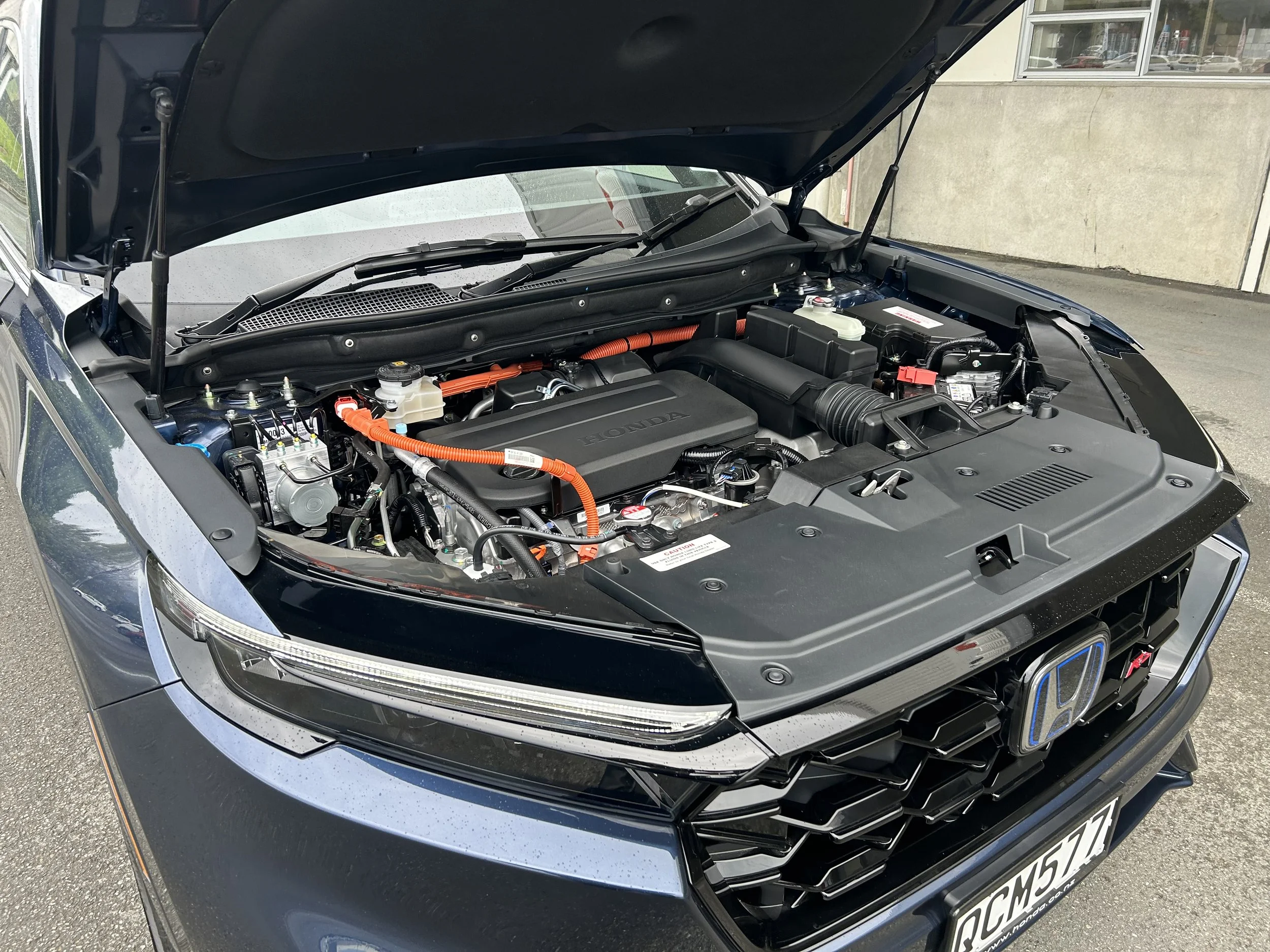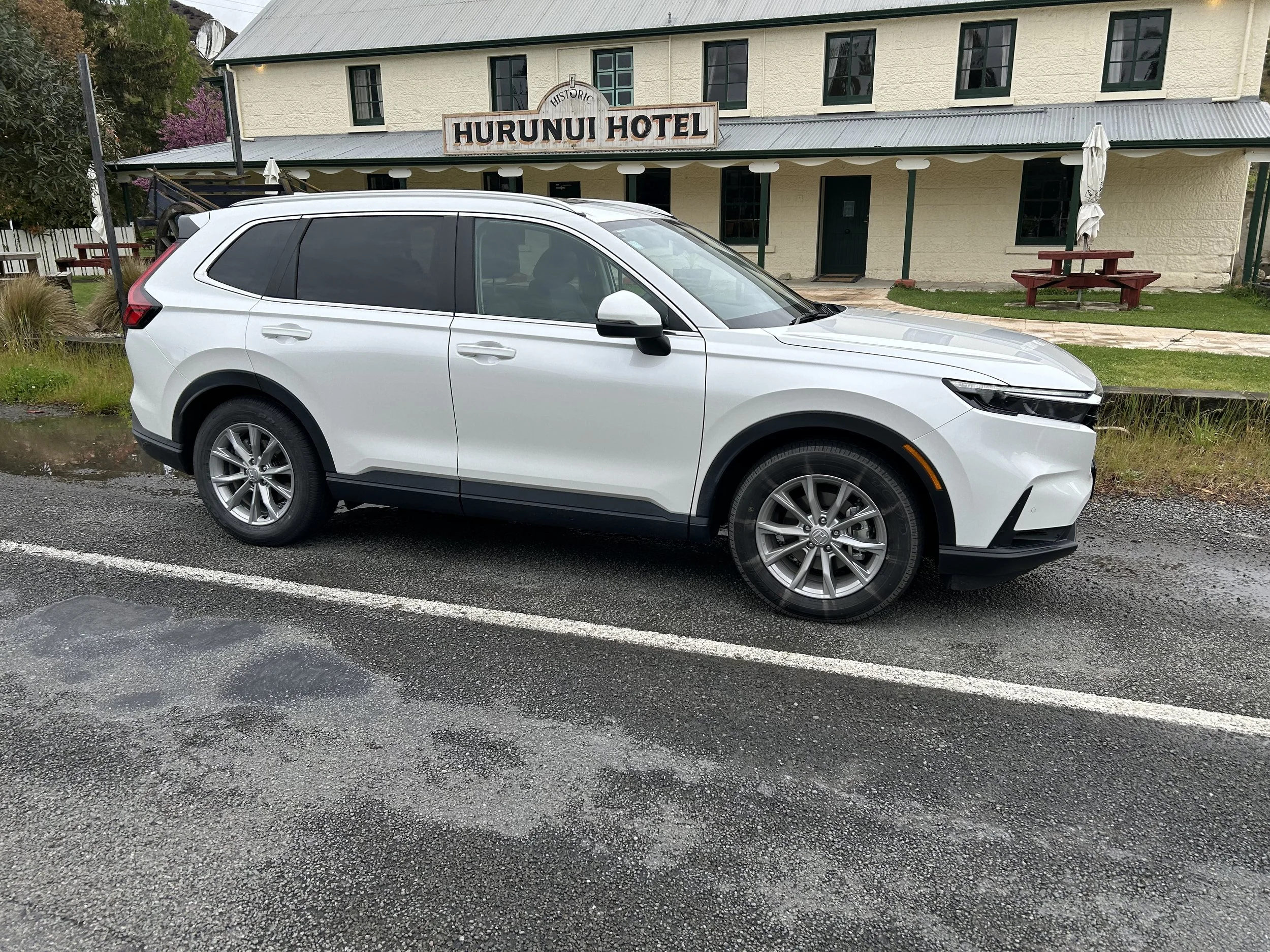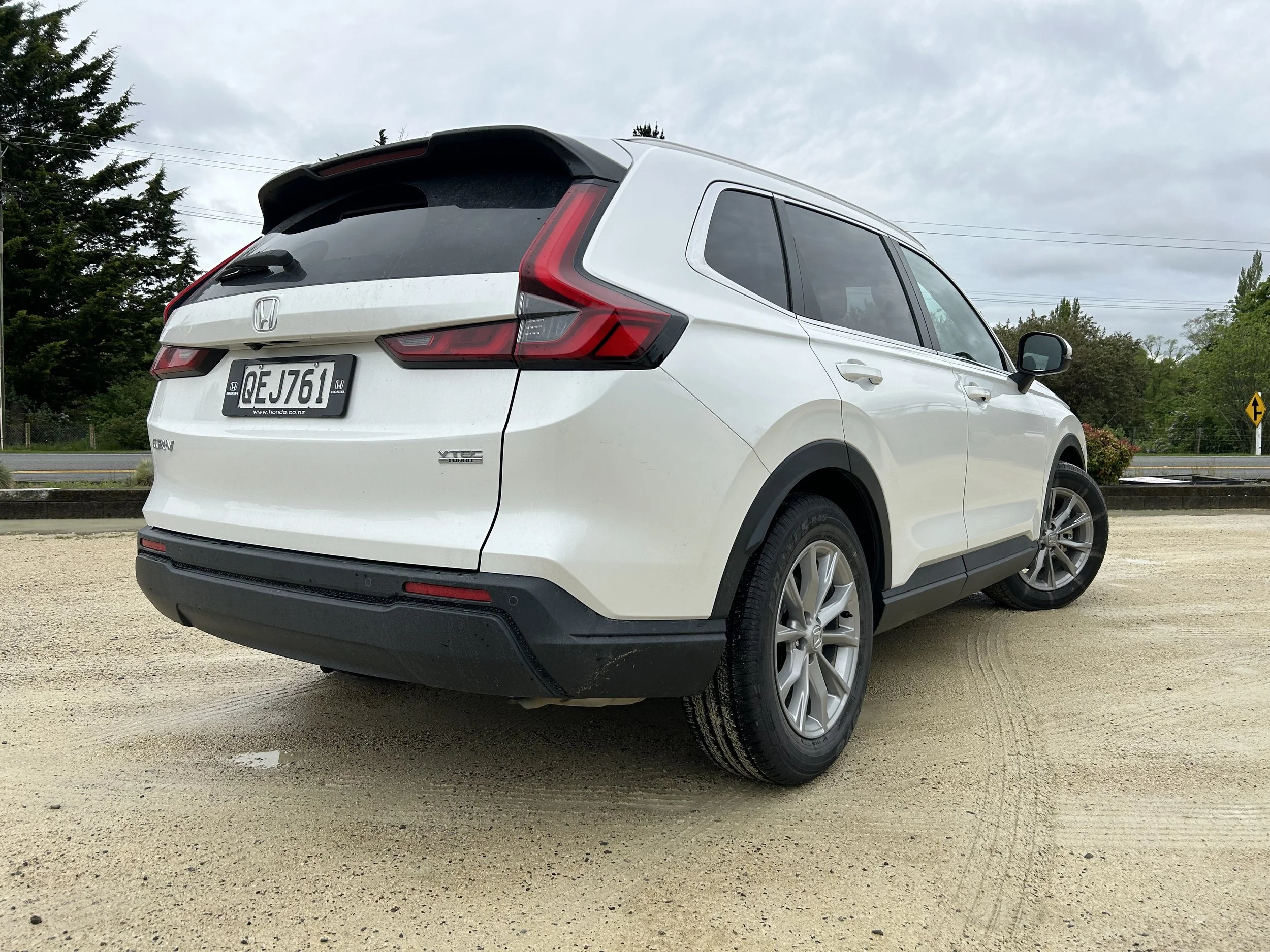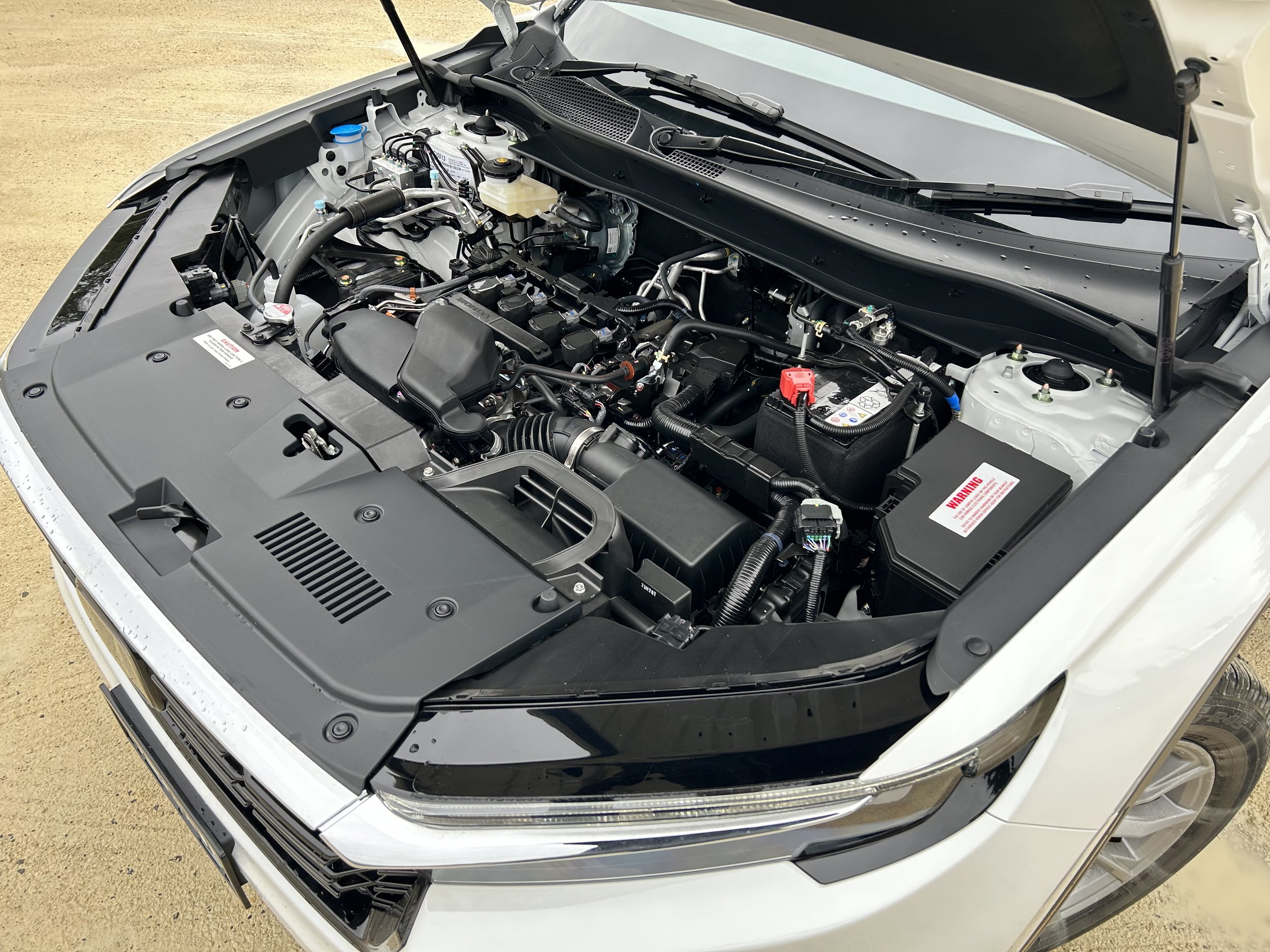Honda CR:V first drive review: Gen six is a smooth operator
/An upsize and enhanced technology are elements that continue to hold this staple in good stead.
FOR a nameplate to tick into a sixth generation means it has been around for quite a while - almost 30 years, in respect to the Honda CR-V.
As the first export market, with introduction here occurring in 1996, a year after its global unveiling, NZ will have seen a lot, not least once grey imports are included. Potentially the domestic population equals that of the Toyota RAV4, a primary foe all these years. They’ve more than once traded places in vying for identification as the world’s most popular compact SUV.
Honda’s attitude about what an SUV needs to be is different, but clearly that’s never been detrimental. It never went big with diesel, only briefly had a manual gearbox and, though it started out as being an all-wheel-drive, now that aspect is almost secondary, especially now, with two of the three new models here being front-drive. Even in all-paw, ruggedness has been tempered - it’s never gone full Swanndri with with diff locks, low range or even beefier tyres and lots of underbody protection. And it’s popularity has never suffered for that. What helped sell one version was a sadly now-divested clever design element; a luggage compartment floor that doubled as a picnic table.
For all the change, it has always been a vital product and, though volume over recent years hasn’t been as strong as it once way, it of course continues to carry a weight of expectation. All the moreso in this time of transition from fossil fuels.
In respect to that, Honda Japan’s strategy in respect to battery reliance is still at point of positioning different products in different places. North America, Japan and Europe are seeing battery cars. We won’t until 2026 not. The United Kingdom sees CR-V with plug-in hybrid. This part of the world isn’t set to.
The programme here places as the top choice, at $67,000, a front-drive CR-V e:HEV RS (above, pictured at Honda’s PD centre in Nelson) that houses a new 2.0-litre Atkinson-cycle four-cylinder petrol engine with two electric motors, delivering 135kW and 335Nm, sitting above two Sport editions - one a $53,000 all-wheel-drive five-seater, the other a $57,000 front-drive seven seater (in white, above) – with a 1.5-litre turbo petrol making a little more power (142W) but significantly less torque, 243Nm.
E:HEV has already come to the Jazz and ZR-V, but with a smaller engine. While it is expected to lift CR-V interest, Honda recognises it’s playing a different game to key rivals, whose electrification plans run from other types of self-contained hybrid in the Toyota RAV4 and Haval H6, one sort of similar in the Nissan X-Trail, to active mains replenishment systems in the Mitsubishi Outlander, Kia Sorento and Hyundai Santa Fe. The Outlander and RAV4 combine battery-fed with all-wheel drive traction. Outlander now does PHEV with seven seats.
All still drink petrol, but some also can run on electric alone - often outsourced from the mains rather than self-generated - to point where they validly exempt fossil fuel function. While e:HEV is acting most as a generator and is only occasionally in a direct drive mode, it is nonetheless, at heart, petrol-reliant. Had Honda NZ been able to secure the CR-V PHEV, it could have had a car that, for up 82 kilometres, could run electrically by drawing off its battery alone.
In respect to PHEV, it argues there’s a relevant downside: Users often get frustrated by need to plug in, perhaps for long periods. Plus there’s the premium for that tech. Buy their hybrids, they argue, and you get lean burn and easily understood and operated tech.
Whatever the merits or otherwise of that contention, first drive experience with an RS being a brisk trot from Nelson to Hamner Springs via Lewis Pass in poor weather was hardly injurious to its Green intent. Delivery of 7.7 litres per 100km average, while still 1.3L/100km shy of it factory-certified best, seemed a very decent result given the conditions and my driving (the Sport, on much easier roads, was almost as good).
E:HEV also seems well-regarded by the customer base, RS commanded 90 percent of the more than 100 customer sign-ups when the order book opened last week. In respect to the Honda buyer profile, it’s older folk and a lot of repeat purchasers - to point its whole marketing campaign (this one called ‘Dream Bigger’ because the car is) aims at retention, rather than acquisition. so, older CR-Vs will be traded on the new; which means high product familiarity.
Ultimately, Honda NZ sees buy-in settling down, but expects RS to continue to achieve at least half the 800 sales anticipated over the next six months. The dark horse is that seven-seater.
With the Odyssey people mover now retired, the CR-V Sport 7 is the sole Honda able to carry more than four passengers. It’s debatably not as all-round comfy as the MPV - leg and head room in the rear-most section seems even more best-suited to children - but Honda argues overall spacial equivalences, superior practicality and less likelihood of ‘soccer mum’ jibes.
Insofar as second and front row room goes, the good news it’s a bigger body this time, so it’s all reasonably decent, even with the panoramic glass roof. Both legroom and headroom behind the front chairs seems ample even for taller passengers, and ability to recline the rear seats to different recline settings should improve comfort.
The styling play likely won’t command a huge amount of lingering attention; it is clearly larger - the seven chair format fits within the same body as the five-seat arrangement - and is perhaps a touch conservative, but is neatly dimensioned and obviously more modern than its predecessor.
Owners of the old car will see more advancement in the new; most of the dashboard design is now in line with features from the Jazz, Civic and ZR-V.
It’s less cluttered and incorporates more modern technology, as well as a smart grille that hides the air vents. Some of the graphics on the central touchscreen and digital instrument cluster are curiously old-school and quirkily delivered. The menu system on the central touch screen is labour some and the driver display in the RS could stands accusation of being over-served with info. But, all in all, it looks much more contemporary and ultimately isn’t hard to fathom.
Being a Honda, it is of course well built, with enough premium ambience mixing with practical plastics, plus a metal-effect dashboard trim to jazz it up a touch.
Honda’s suite of safety systems, called Honda Sensing, is pretty solid and spans all three models. It uses sensors around the entire car to create a wall of defences, most well understood these days, such as the autonomous emergency braking and the lane departure warning. The AEB can now detect pedestrians and cyclists, and a main camera with a wider field of view. The lack of a head-up display is disappointing, though, and there’s no traditional blind spot monitoring.
With the weather and the initial phase of this 400km introductory drive delivering some challenging road conditions - quite apart from the twists and turns, there’s a lot of repair work from storm damage - prior to set off I was wondering if the one C-RV yet to land (and still eight weeks way) that AWD five-seater Sport, might have been the best choice. As it transpired, the front drivers were up to the gauntlet throw; not as much traction, but still decent grip and the dynamic and traction assists all worked as they should, when they had to.
Going by how hard some Honda NZ staffers driving a third generation all-paw example plucked from the Honda heritage fleet in Nelson were working to hang on behind, especially through the windier and wetter sections of Lewis Pass, impression of the RS being as sure-footed as I sensed it to be was no illusion.
That section of road was an interesting workout for what will surely stands as the most technically intriguing drivetrain in this sector. In simplest explanation, with e:HEV the electric motors drive the wheels most of the time, with the petrol engine acting as a power station to keep the relatively small battery topped up. At that level, it’s kinda like the Nissan e:Power system.
Honda, though, ups the ante with a CVT that isn’t; that involvement being entirely simulated, yet very effectively. When the car is being driven on electric motivation and when the engine also directly contributes is also a brain twister.
From my perspective, on this day, the electric drive was to the fore on open, easy stretches under low to medium throttle loads, the engine generally saving itself from direct involvement until in situations involving repeated heavy throttle hammering. With hard acceleration comes what you imagine are engine rpm sweeps that sound like just like well-executed race shifts, but without shift shock. It’s also theatre, a deliberate programmatic. Fun, nonetheless.
The powertrain’s oomph is also like magnified; even when you are absolutely sure the engine is directly involving it’s obviously not solely actioning, as in overall feel the urge is both smooth and too seamless for that to be the case. It takes a bit of getting used to, but the manner in which it can build pace is quite something. The primary aim is efficiency, which it clearly avails, but it’s also set up to be practical. The engine, electric motor, and generator being engineered so they are off-axis from one another, allows the engine to be clutched into the mix to directly drive the wheels in two ratios, not just one, and also is a reason why this model has a reasonable towing rating; albeit that 750kg maximum being 250kg shy of the Sport 7’s.
The handling in this top model is overall rewarding and friendly; as much as the CR-V is now bigger - and heavier - than it has previously been, it still feels deft from behind the wheel. Within reason.
Even in the days when Honda could call on Ayrton Senna’s services to help sort a car, you’d doubt the CR-V would have been on that list. As much as RS is often a codex for sporty, and regardless this one has a firmer suspension tune and thicker stabiliser bars than the Sport, it also keeps it real in terms of who will buy it, and why.
That’s a sensibility worth saluting. While the flagship has precise and confidence-inspiring handling, and excellent grip, it’s the quality of the ride that really stands out. The RS suspension set-up manages to find a great balance between firm and soft, taking bumps and ruts in its stride and and feeling much calmer than so many stiffer rivals. It’s all about smoothness and fluidity; on this drive, on this day, that all enhanced the car’s competence and confidence.
The roads on which the Sport 7 (in white) was experienced were much less of a challenge. Gut feeling is that this one has lighter steering feel, and it might express more body roll.
Again, though, it gives off a sense of structural rigidity and outright calm you don’t always expect to get in this category. It benefits from a stiffer body shell; the addition of structural adhesive alongside the usual spot welds, use of beefier front and rear subframes has paid off.
The Sport drivetrain is quite as smooth, but it is also quiet and fairly nippy, certainly demonstrating healthy pace with one aboard. As always with seven-seaters, you wonder how much of the edge would be dulled by having every chair occupied, but looking at how much torque it has and where it develops, chances are that as long as some of those on board are average weight kids, you’ll be okay.
The CVT is a refresh of a well-established set-up from the older type and, operability wise, is as you would expect; prone to some drone but calibrated to provide comfortable open road cruising. With this one paddles select the CVT steps - in the RS they alter regen settings - and there’s just a single drive setting, for economy, whereas the RS has three, the Sport 7.
Again, you get the idea of a lot of effort having gone into sound suppression. The RS achieves the fanciest treatments in a range-wide targeted use of sound insulating materials and glass that is a little thicker than previously., but in the Sport as well, even at higher speeds, road and wind noise are well-suppressed.
Hat off to Honda NZ for being troubled to provide a really decent first taste; all too often these days, new car interactions deliver more time at the lunch table than behind the wheel. This one couldn’t be so accused. Six hours’ solid driving was a great first try.
You can tell why Honda is so confident about this car. CR-V has also had talent and style. A roomier interior alone should widen its appeal; that seven seat layout offers less luggage room - Honda citing 150 litres means, in actual turns, just enough for a couple of soft bags - with all seats in use. But when they drop, and with the middle row slid forward, there’s a touch more luggage space in five seat mode than in the regular layout, with offers 581L (in the RS). With rear seats down that improves to 1064L in the ‘Seven’ and 840L with RS.
Of course there’s more and every improvement is welcome; not least that it all feels more substantial. That 2.0-litre e:HEV is a true surprise; it seems to suit the car perfectly and leaves it ideally set for efficient driving, whether that’s urban or long haul.
Prices have risen, by up to $10,000 unfortunately, and while the design considerations involved with the seven seater will always been it front-drive and without the really trick powertrains, as much as the e:HEV works well now, it’d be still interesting to see it with all-wheel-drive (as it already avails elsewhere) or even in that PHEV format.
The writer attended this event as a guest of the distributor, with travel, accomodation, a small gift and a meal provided.

